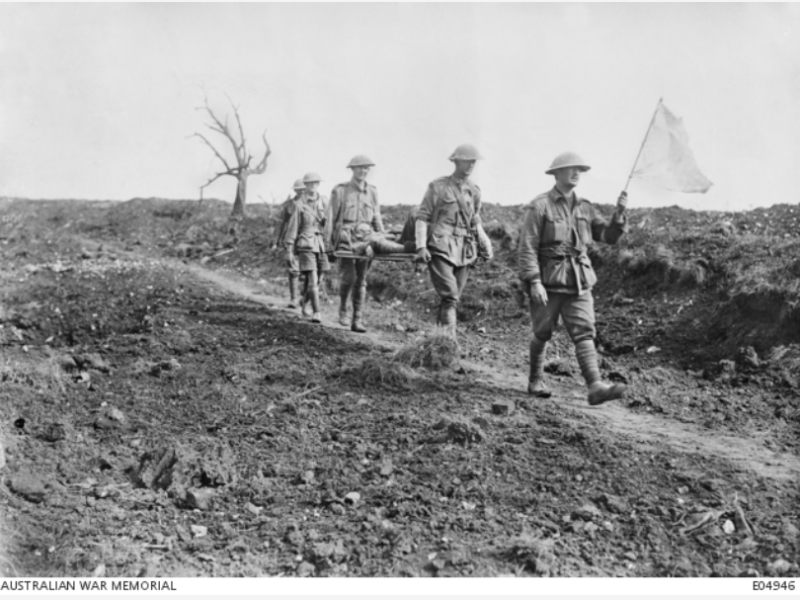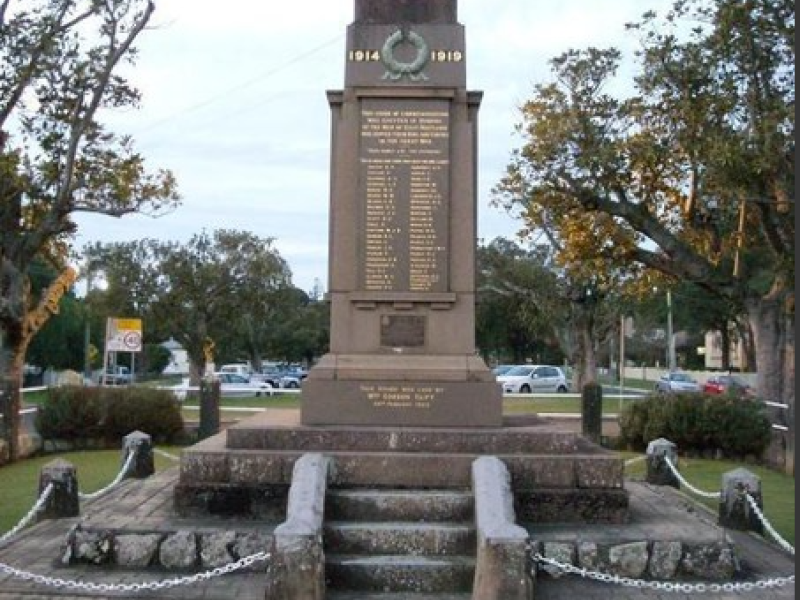Private Harold Vincent Benning, 1st Battalion, AIF
Popularly known as “Harry”, Harold Benning was born in 1897 to George and Elizabeth Benning of Maitland, New South Wales. His father was the railway stationmaster at East Maitland for many years, and many of Harold’s brothers went on to work on the New South Wales railways.
Following his schooling at the local public school, Harold went on to become a grocer at the Maitland Co-operative store. He was known to be “of a most jovial disposition, and was held in the highest respect and esteem by a large number of girl and boy friends”. He was a well-known footballer at East Maitland, and had taken an active part in the choir at St Albans in Muswellbrook. Benning was described as having “a strong, wiry build, and … the heart of a lion”.
He enlisted in the Australian Imperial Force in January 1916, following in the footsteps of his older brother Leslie, who had enlisted the previous August. Before he left for camp, Harold was presented with a wristwatch by his employer. In his thank you speech, Benning said “he would do his best when he got to the front, and if he fell … he knew he would fall in a good cause”.
He was posted to the 1st Battalion and left Sydney Harbour on 15 January 1916 for active service overseas. He first went to Egypt, where he joined his brother Leslie.
Private Harold Benning spent a short period serving with the 45th Battalion, and was involved in the fighting around Pozières.
His brother Leslie was with the 1st Battalion as it spearheaded the attack against Pozières on 23 July 1916, and died of his wounds the following day. He was 21 years old. Harold returned to the 1st Battalion a few months later and continued to serve with his old unit.
In November 1916, the 1st Battalion participated in an ill-fated operation near the French village of Flers. As the men left their trench, they came under heavy German rifle, machine-gun, and bomb fire. Despite suffering heavy casualties, they continued to launch further attacks throughout the day. The battalion suffered more than 150 casualties as a result.
One of those wounded was Private Harold Benning. He was evacuated from the battlefield with gunshot wounds to his thighs.
He was admitted to hospital in Rouen the following day but died of his wounds on 14 November 1916. He was 19 years old.
Harold Benning was buried in the St Sever Cemetery Extension in Rouen, under the words “at rest”.
Dr Meleah Hampton, Historian, Military History Section
Image: Australian stretcher bearers coming in under a white flag, passing the old cemetery of Pozieres, having come from the line near Mouquet Farm. At this point Tramway Trench crossed Brind's Cut. August 1916.

 Australian War Memorial
Australian War Memorial